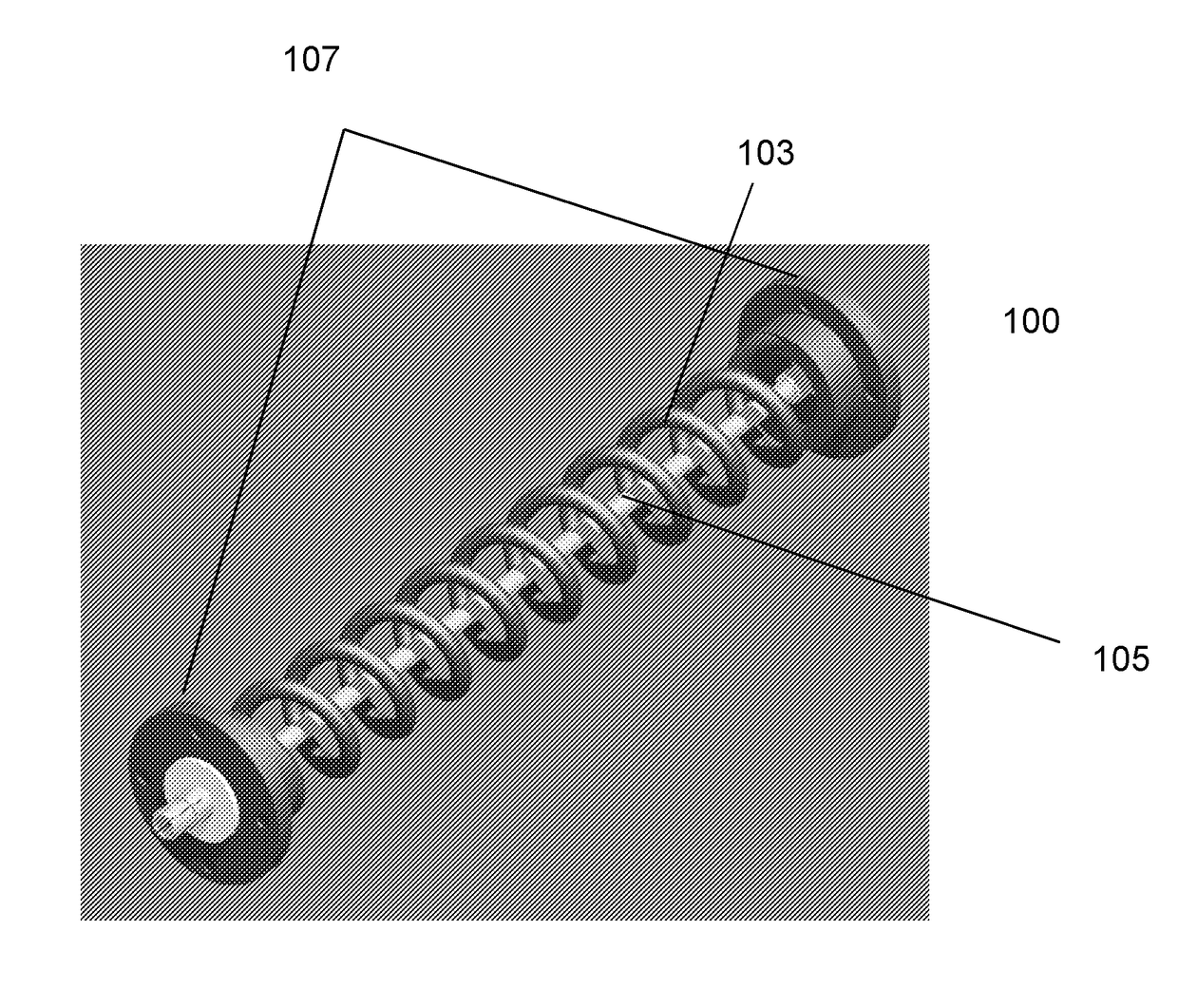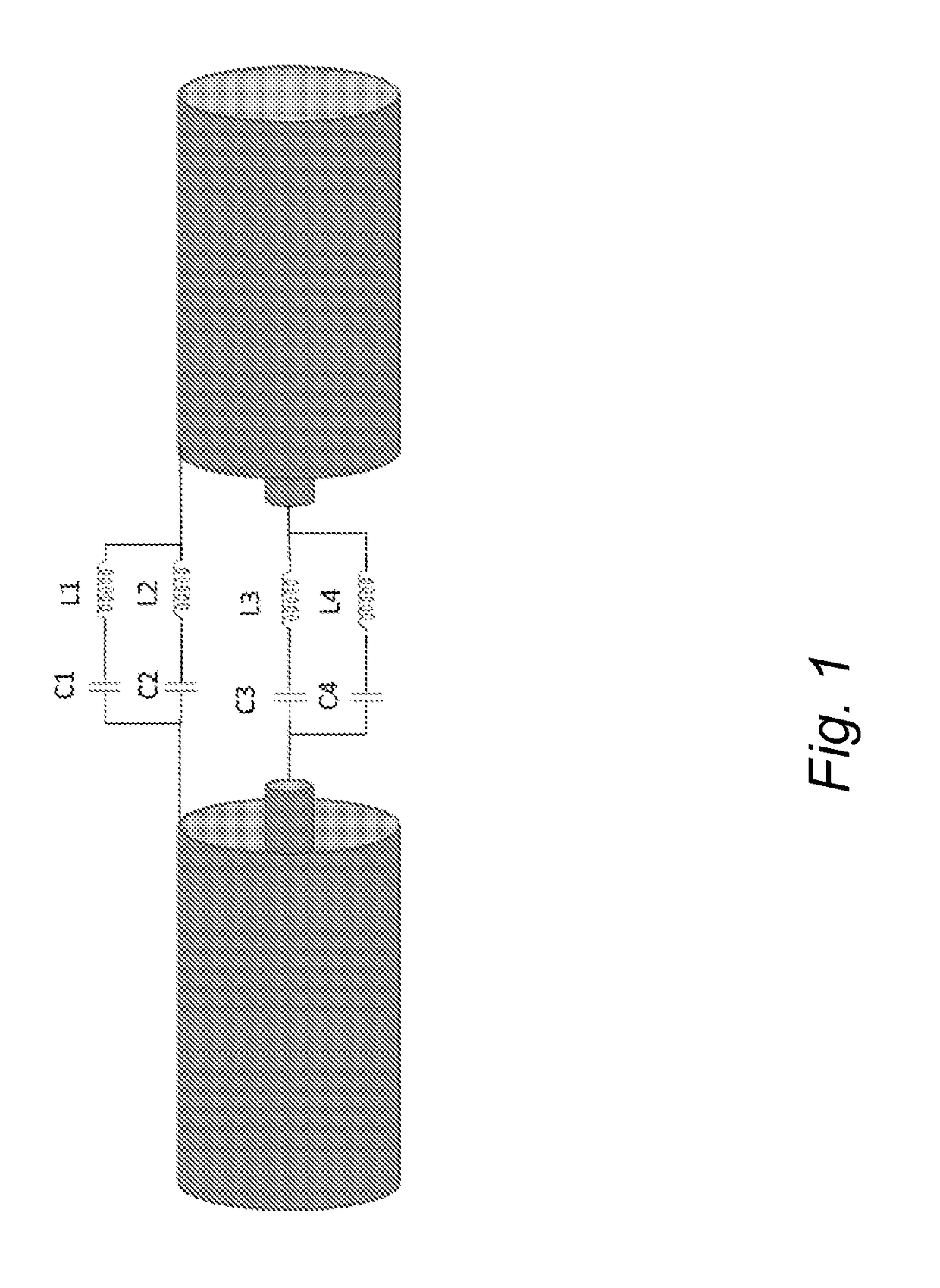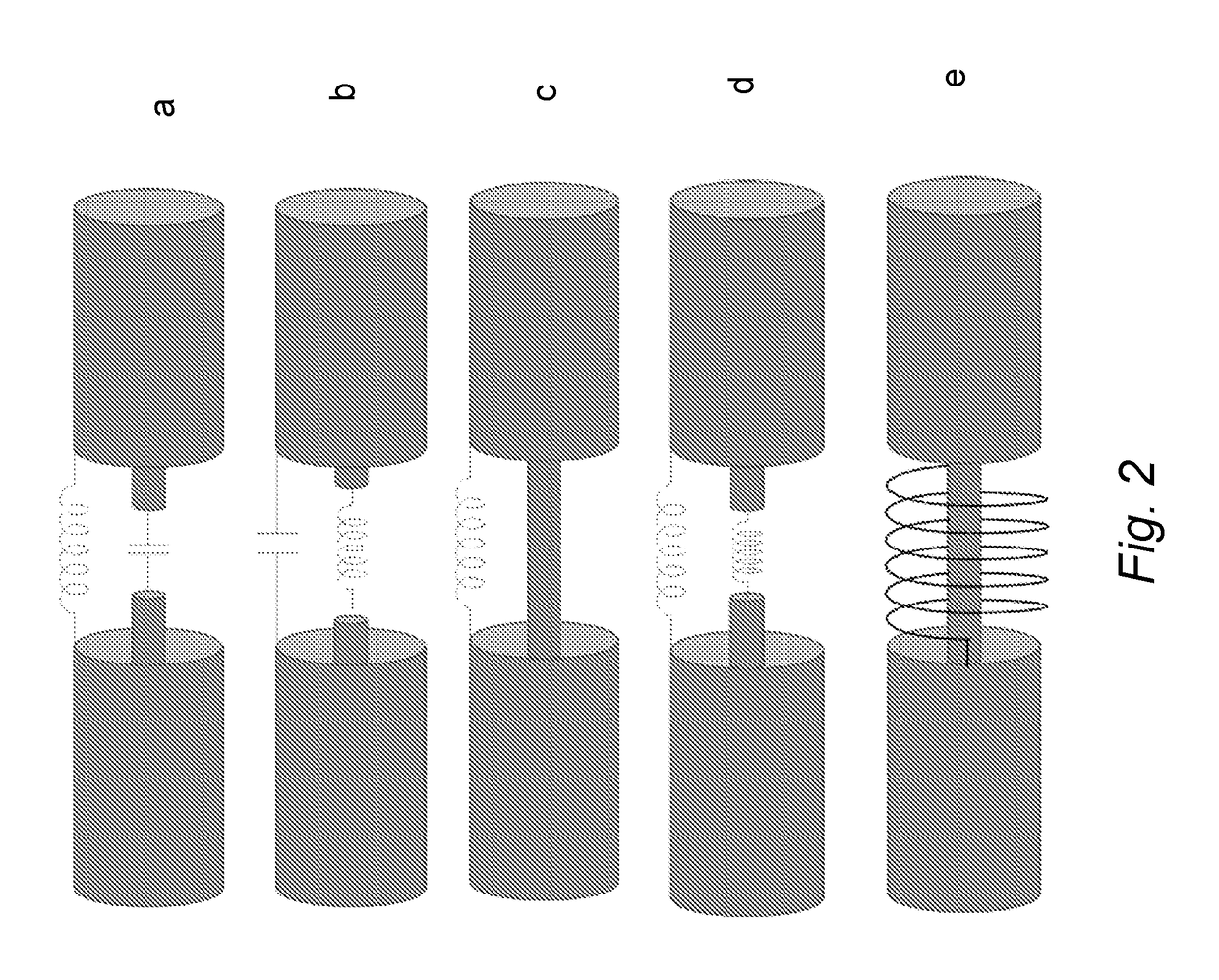Coaxially Arranged Mode Converters
a converter and coaxial arrangement technology, applied in the direction of subaqueous/subterranean adaption, baseband system details, borehole/well accessories, etc., can solve the problems of ineffective resonant antennas of concentrated type, ineffective resonant antennas in distributing radiation along the well,
- Summary
- Abstract
- Description
- Claims
- Application Information
AI Technical Summary
Benefits of technology
Problems solved by technology
Method used
Image
Examples
Embodiment Construction
[0042]According to an embodiment of the present invention, the device includes electrical constructions which may be used as mode converters for the formation of the RF antenna in the well. A system for heating the wells by means of a coaxial antenna to which the (one or more) devices according to the present invention may be applied is for example described in the patent application filed, in parallel with the present one, by the same applicant.
[0043]The system operates by applying power in the order of 100-1000 kW at frequencies in the range of 0.1-10 MHz. An embodiment according to these parameters may be advantageous in achieving moderate heating along a drain in the order of several hundred metres in length, such as 1000 m or more. An embodiment of this kind may increase the productivity of a heavy oil well to a significant extent, at the same time ensuring a limited expenditure of energy per barrel of oil produced. In an embodiment of this kind, the increase in temperature may...
PUM
 Login to View More
Login to View More Abstract
Description
Claims
Application Information
 Login to View More
Login to View More - R&D
- Intellectual Property
- Life Sciences
- Materials
- Tech Scout
- Unparalleled Data Quality
- Higher Quality Content
- 60% Fewer Hallucinations
Browse by: Latest US Patents, China's latest patents, Technical Efficacy Thesaurus, Application Domain, Technology Topic, Popular Technical Reports.
© 2025 PatSnap. All rights reserved.Legal|Privacy policy|Modern Slavery Act Transparency Statement|Sitemap|About US| Contact US: help@patsnap.com



